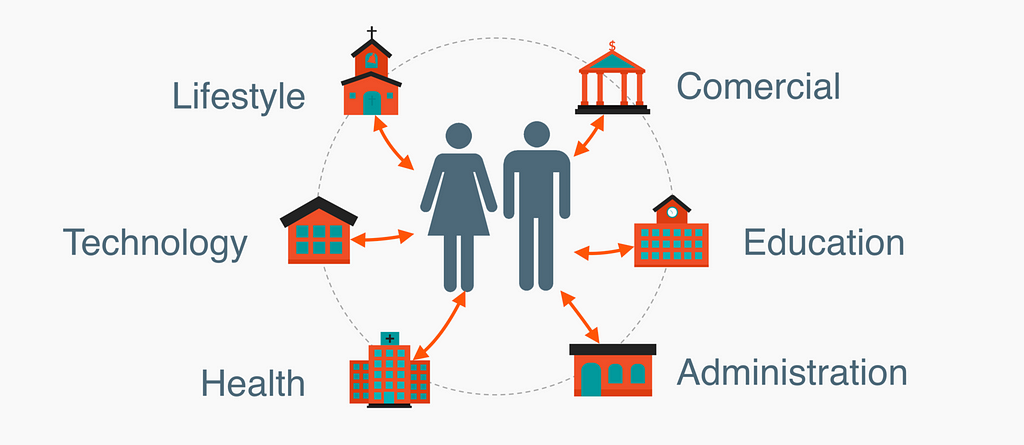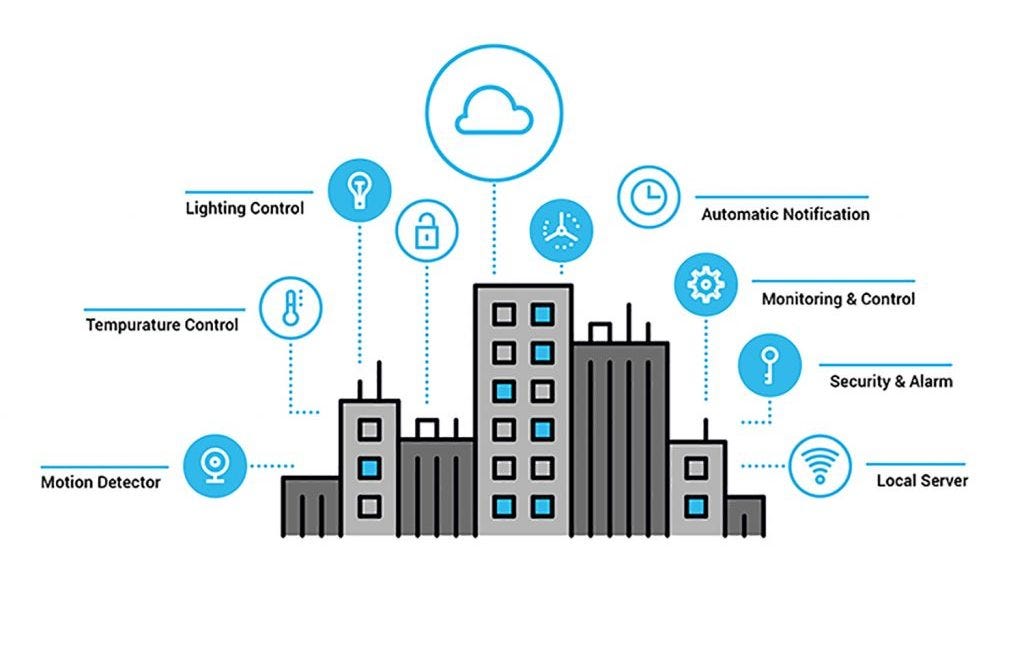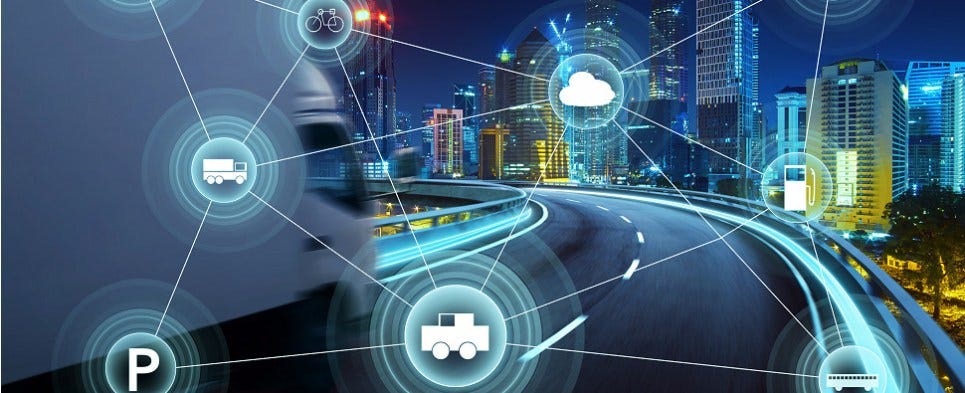Latest news about Bitcoin and all cryptocurrencies. Your daily crypto news habit.

Canada is moving forward with great initiatives to support the smart cities development as the government well understood it is a technology race that will promote the country’s image and create opportunities to sell and promote our technologies abroad. What amaze me is the social and community dimension of this revolution as a citizen, way of life and environment are put together at the center of the strategy.
We are in the merge of a new world population distribution and countries have to face the inevitable city growth and prepare an adequate, intelligent and scalable infrastructure. Energy, waste, pollution, methods of communication, interactivity, transportation, traffic, and government services are the big challenges to manage environmental and human impacts. This transformation will be influenced by the population itself based on the acquaintance of technology, preferences, way of life, community, office location or work status. Media and marketing agencies already acquire the voice of the people through surveys and buyer’s persona analysis. Although, I believe organizations can definitely tenfold their effort to reach “the voice of customers”.
The areas of applications were already covered in many published articles such as, Energy Savings, Traffic Management Systems., etc. No need to reiterate, instead, for the first part of this article, I will only discuss 2 domains where the potential is huge and full of startup opportunities: Building and Public transportation. Secondly, I will open the debate on 3 major element organizations need to focus on for a successful smart city development.
Let’s start by my favorite smart domains:
Smart buildings:
The obvious objective is to transform and utilize buildings to improve people’s lives. In another word, implementation of intelligent control system interacting with the environment and user habits. For example, an office building with a regulated temperature control system taking all factors into consideration such as, sensing the number of people in a given room, the hours of operation., etc. These buildings would be connected with other useful applications to exchange data. We can install intelligent display as media signage giving local city and national news with relevant citizen information based on business team profile, weather, traffic conditions depending on the day of the week., etc. A system that facilitate the data accessibility to optimize citizen life and activities during working hours and afterwork hours.
Today, some partnership already exist with Siemens and Microsoft ABB racing to reduce energy costs for companies. Building management system applications are so wide that a simple article would not be enough to give you what it is already in the pipeline as many domains of the industries are involved. In this example, we already have an idea of the future complexity and the amount of data to manage which require lots of storage, efficiency and AI!
Smart Transportations:
Smart public transit is essential to meet the challenges of urbanization. The first action is already in progress in Europe to integrate public transport into other services such as connected infrastructure (e.g. traffic lights, traffic monitoring and parking). The inner-city buses in Stockholm communicate with traffic lights to be granted priority if they are running late and information boards provide travellers with information about delays and alternate routes. A startup company MaaS Global now offers citizens in Helsinki multimodal means of transportation including car pools, bikes and taxis. In Canada Smart traffic Signal TrafficLink has been implemented in Waterloo (Ontario) and Brossard (Quebec) with already positive results on Road capacity, greenhouse gas emissions, accident and road conditions.
As you can see through this 2 examples, Market opportunity is huge and will request a synergy of technologies such as, and not limited to, AI, Website, mobile applications, IoT, Media, security, community blogs, software supports and the list goes on…The new city era will focus on benefits for the citizens everything from reducing friction, stress, pollution in cities where population is increasing fast, but not limited to only big cities. Small cities is already testing and or deploying quick wins. We are just at the beginning of the journey and challenges will appear from anywhere.
For a good and high level perspective, I noticed 4 major elements to carefully manage in order to get a successful smart city ecosystem:
1 / Education
I think it is the most important thing. This is not only a business matter for lucrative market for big corporations and startup.
This is an ecosystem that will work with and by the citizens.
Education and awareness are the basic tools to create traction, understanding and initiatives. Canadian government are already doing a lot to emulate the ecosystem by creating the Smart City Challenge. This is only the first step of the Smart City. More people, engineers, association members, entrepreneurs and industries should participate more in workshops and Meetups. Impact on the job market is crucial. We have to prepare for the new resources to sustain the new market needs. We need coders, marketers, experts in infrastructure & system security and new partnerships. Companies such as IBM and Microsoft are already working on it but this will not replace the intelligence to integrate the city and the creative intelligence to develop new concepts. I will finalize this first point by what I consider the top priority: People. We need to get all the insights, experiences, needs, day to day challenges and make an intelligent analysis based on technology knowledge, social class, living area, commuting profile., etc. This will be a really rich and helpful information to create useful solution and support the traction and the engagement.
2 / An Agile Ecosystem
This is an Human Transformation with collateral damages: Technology will kill jobs but will create more jobs. No doubt about that. It means, this need to be anticipated to help people change their career in order to reduce the unemployment rate.
There is place for everyone in this new technology world and the startup and government have a huge role to play.
As a new Ecosystem, Social and human behaviour will evolve and will create a fragile and continuous changing environment. We have to develop a technology maturity and good level of integration to align with citizen needs and environment requirements. I think the profile of the future citizen will be definitely changed as he/she will be continuously interacting with a system, obviously keeping a high demand of tailored services. A big challenge for companies, city services and startups will be to create a stability in a real complex world with a higher competitive market. In such entropic environment, the citizen will have to be the winner.
3 / Data Management and Security
We are talking about a huge amount of data from consumers and producers. A hyper connected ecosystem, complex with a huge risk to manage a mess…
Boundaries seems unreachable and scalability issues will have to be addressed at the beginning (Intelligent homes, autonomous vehicles, traffic systems, transportations., etc). Storage, property, intelligence data management will depend on the channel used and from where and to who the data is addressed (Media & advertisement, Police department, Real Estate, City services, Private citizen data…). Solutions are already existing but I truly believe that we still are in the MVP level and we will face huge problem of scalability. It raises a very important question of data security: How to provide a sufficient level of security for storage and exchange of data? Some project such as Blockchain are in progress with some existing solutions (IOTA is one of the famous example).
An interesting study shows that specific data security requirements and solutions could be approached in a four-layer framework to make better decisions in security design and management. These elements are considered to be critical and require a close control: Smart Things, Smart Spaces, Smart Systems and Smart Citizens.
4 / Governance
My favorite element!
The city authority have to be well informed about all the problems related to smart things, spaces, services and citizen security;
“Research Centers” and “Local clusters” could be used as “Center of Excellence” and depending on a national central HQ. A top council covering a decentralized network with nodes which would represent big cities or a group of small cities. The aim of this governance would be to promote and nurture initiatives at national and local level and make sure to spread and coordinate global effort over the country with the government collaboration. This is already the case in the industries with lean six sigma methodologies. Topics covered by this type of extraordinary governance should be focused but not limited to security and privacy protection, network protocols, identity management, standardization, regulation, trusted architecture, voice of citizens and quality of life (such as stress level and others indicators).
It is essential to create an Agile and Integrative Council Organization.
This is my first article about the Smart City and my humble goal is not to reinvent the wheel but to try to give the readers the high potential of this domain, the opportunity to future entrepreneur to make a difference and analyse how we can leverage the city transformation in many aspects.
I am pleased to see Government and Mayors doing the first step by taking the lead and giving more power and funding to services to support and accelerate Canadian startups. I truly believe this is just the beginning and we have to move forward as the competition is already here not so far from our country.
- Begin small with quick win to get the buy off of the population and key stakeholder (City services and government)
- Small City can do also big and amazing smart thing and could be used as laboratory for big cities.
- Citizen will always be a major part of the equation. Listening to their needs, frictions, frustrations will definitely help to make greater smart things.
Thanks for taking the time to read my article and don’t hesitate to contact me or leave a comment. My next article will cover specific technologic solutions related to transportation, data management and media.
Cheers.
Hugo.
The Four Essential Elements of the Smart City Revolution was originally published in Hacker Noon on Medium, where people are continuing the conversation by highlighting and responding to this story.
Disclaimer
The views and opinions expressed in this article are solely those of the authors and do not reflect the views of Bitcoin Insider. Every investment and trading move involves risk - this is especially true for cryptocurrencies given their volatility. We strongly advise our readers to conduct their own research when making a decision.



